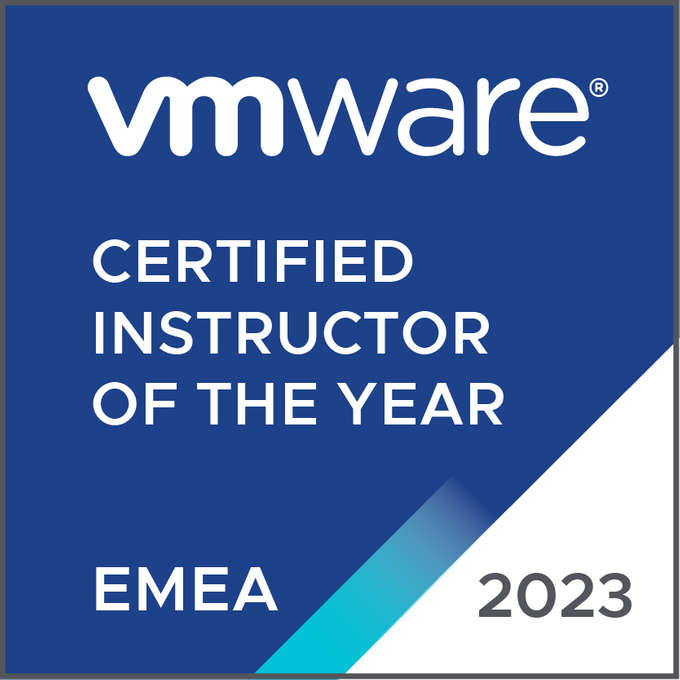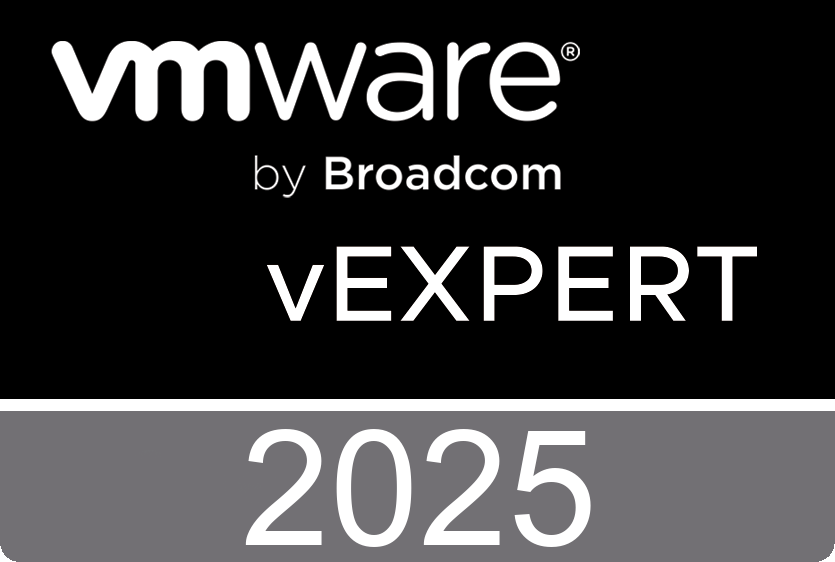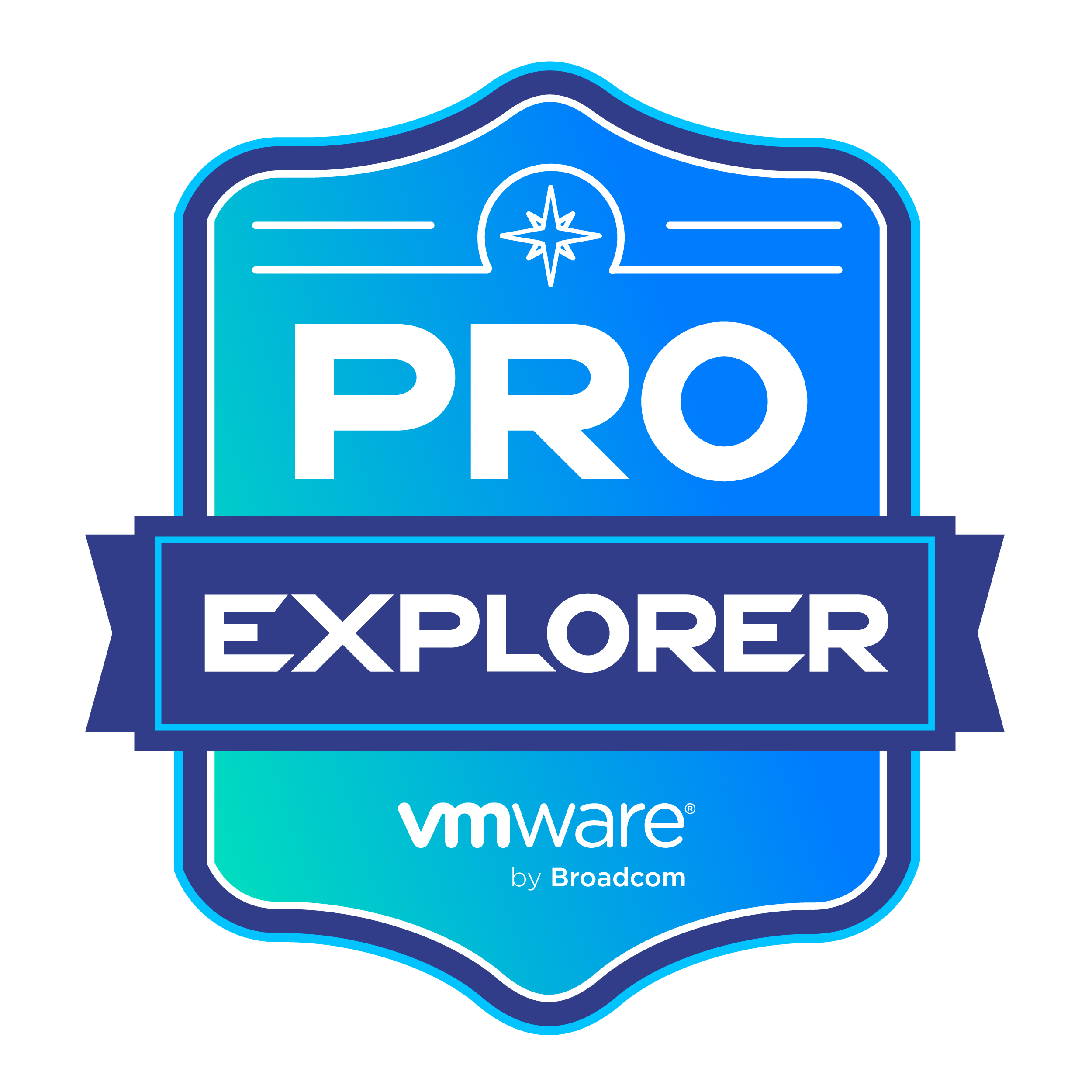Tuesday, February 28. 2012
vCloud Director Video - Add a Firewall Rule to a vApp Network
The virtual machines in a vApp can connect to vApp networks (isolated or routed) and organization networks (direct or fenced). You can add networks of different types to a vApp to address multiple networking scenarios. Select the Networking tab in a vApp and select the Show networking details check box to view a list of the networks that are available to the vApp. Virtual machines in the vApp can connect to these networks. If you want to connect a virtual machine to a different network, you must first add it to the vApp.
A vApp can include vApp networks and organization networks. A vApp network can be isolated by selecting None in the Connection drop-down menu. An isolated vApp network is totally contained within the vApp. You can also route a vApp network to an organization network to provide connectivity to virtual machines outside of the vApp. For routed vApp networks, you can configure network services, such as a firewall and static routing.
There's also a possibility to connect a vApp directly to an organization network. If you have multiple vApps that contain identical virtual machines connected to the same organization network and you want to start the vApps at the same time, you can fence the vApp. This allows you to power on the virtual machines without conflict, by isolating their MAC and IP addresses.
It's also possible configure certain vApp networks to provide firewall services. Enable the firewall on a vApp network to enforce firewall rules on incoming traffic, outgoing traffic, or both. When you enable the firewall, you can specify a default firewall action to deny all incoming and outgoing traffic or to allow all incoming and outgoing traffic. You can also add specific firewall rules to allow or deny traffic that matches the rules to pass through the firewall. These rules take precedence over the default firewall action.
Sunday, February 26. 2012
Thanks for your votes - NTPRO.NL ended up in the top 3
In this vChat episode (#25) of vChat Eric, David, Simon and special guest John Troyer (VMware) announce the Top 25 Virtualization Blog awards.
Saturday, February 25. 2012
Poor Mans Storage Appliance
VMware has released their vSphere Storage Appliance which seems like a nice alternative for small and medium sized setups to get shared storage without buying a SAN og NAS. It does however have a few drawbacks. It only runs in VMware. It is kind of expensive (you could probably buy a nice NAS for the same money).
The release of vSphere Storage Appliance did, however, give me the idea of creating a storage Appliance from open source software. The idea for pmsApp was born. The idea is that you have two (or more) virtualization hosts you want to set up in a cluster. This could be VMware ESXi, Proxmox PVE, VirtualBox or any other virtualization platform that is capable of clustering. In order to get a working cluster, you need shared storage, but you only have the local storage in each virtualization node.
pmsApp will take local storage on a virtualization host and share it with pmsApp's on the other virtualization hosts to create shared storage that can be given back to the virtualization hosts through iSCSI or NFS. A bit more detail... Each pmsApp will join a HA cluster and export local storage as iSCSI targets. The main pmsApp in the HA cluster will join the exported storage in a sotware RAID and export that as NFS share or iSCSI target that can be used by the virtualization hosts as shared storage.
http://www.pmsapp.org/
Friday, February 24. 2012
VMware Labs presents its latest fling - vBenchmark
- Operational Agility: for example, how much time do you take on average to provision a VM?
- Quality of Service: for example, how much downtime do you avoid by using availability features?
vBenchmark provides a succinct set of metrics in these categories for your VMware virtualized private cloud. Additionally, if you choose to contribute your metrics to the community repository, vBenchmark also allows you to compare your metrics against those of comparable companies in your peer group. The data you submit is anonymized and encrypted for secure transmission.
Download vBenchmark
Thursday, February 23. 2012
Nexus 1000V v1.5 Technical Deep Dive
You will learn about the latest new technical features and benefits of the just released
Nexus 1000V v1.5. Also check out this video Video - Cisco Nexus 1000V v1.5 Installation.
Tuesday, February 21. 2012
Video - Cisco Nexus 1000V v1.5 Installation
The Cisco Nexus 1000V is compatible with any upstream physical access layer switch that is Ethernet standard compliant, including the Catalyst 6500 series switch, Cisco Nexus switches, and switches from other network vendors. The Cisco Nexus 1000V is compatible with any server hardware listed in the VMware Hardware Compatibility List (HCL). Cisco and VMware jointly designed APIs that produced the Cisco Nexus 1000V. The Cisco Nexus 1000V is a distributed virtual switch solution that is fully integrated within the VMware virtual infrastructure, including VMware vCenter for the virtualization administrator. This solution offloads the configuration of the virtual switch and port groups to the network administrator to enforce a consistent data center network policy. In this release Java applications are introduced for VSM and VEM installation.
For the Virtual Supervisor Module (VSM)—The control plane of the switch and a virtual machine that runs Cisco NX-OS, just download the Nexus1000v.4.2.1.SV1.5.1.zip file and enter the following command from a Windows, Linux, or Mac command prompt:
java -jar zip_file_location/Nexus1000v.4.2.1.SV1.5.1/VSM/Installer_App/Nexus1000V-install.jar VSM
For the Virtual Ethernet Module (VEM)—A virtual line card embedded in each VMware vSphere (ESX) host. The VEM is partly inside the kernel of the hypervisor and partly in a user-world process, called the VEM Agent. Enter the following command from a Windows, Linux, or Mac command prompt:
java -jar zip_file_location/Nexus1000v.4.2.1.SV1.5.1/VSM/Installer_App/Nexus1000V-install.jar VEM
Cisco Nexus 1000V Series Switches - Configuration Guides
Cisco Virtual Security Gateway for Cisco Nexus 1000V Series Switches Data Sheet
Sunday, February 19. 2012
Technical Whitepaper - Network I/O Latency on VMware vSphere 5
Saturday, February 18. 2012
Video - Scripted ESXi Installation
Scripted installation is an efficient way to provision multiple ESXi host. This video explains how to use a kickstart file to install or upgrade ESXi. Both Shift-O invocation and PXE boot are supported.
Friday, February 17. 2012
Options for becoming a VCP 5.0
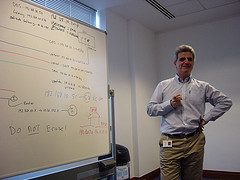 VMware's Andy Cary who works as a Senior Technical Trainer in EMEA has received a lot of e-mails recently about what the options are for people to secure their VCP5.0. The table in the diagram below shows the 4 different options for attaining your VCP 5.0 exam. Andy thinks there's confusion with the text in printed orange, this text is only valid until the 29th February. So at the 1st March all the orange options will have disappeared from the diagram.
VMware's Andy Cary who works as a Senior Technical Trainer in EMEA has received a lot of e-mails recently about what the options are for people to secure their VCP5.0. The table in the diagram below shows the 4 different options for attaining your VCP 5.0 exam. Andy thinks there's confusion with the text in printed orange, this text is only valid until the 29th February. So at the 1st March all the orange options will have disappeared from the diagram.Here's Andy's explanation regarding the four different layers for achieving a VCP5.0
Option 1 - Just Starting with VMware or VCP 2
Another way of saying this is there is no upgrade path from VCP2 to VCP5 and the student hasn’t attend any vSphere 4.0 or 5.0 classes. So in this case the student must attend a vSphere 5.0 qualifying class = vSphere 5 Install Configure and Manage or vSphere 5 Fasttrack and take the VCP5.0 – no deadline for when they have to take the exam
Option 2 - Currently a VCP3
So now if a student is a VCP3 they can take the VCP5.0 exam if:-
1. Attend the vSphere 5.0 What’s New class and take the VCP 5.0 exam by the 29th February – they won’t be able to take the exam after 29th February if this the only training they have attended.
2. Attend vSphere 5 Install Configure and Manage or vSphere 5 Fasttrack and take the VCP5.0 exam – there is no deadline for when they have to take the VCP5.0 exam
Option 3 - Currently a VCP4.0
Go take the VCP5.0 exam by 29th February. If a student in this situation wants to become a VCP5.0 after the 29th Feb they have to attend a vSphere 5.0 What’s New class.
Option 4 - No VCP Certification but have completed one of the VCP4 qualifying classes
In this example a student has attend let’s say the vSphere 4.x ICM class but they haven’t passed any VCP exams.
1. A student will be allowed to take the VCP4.0 exam and then VCP5.0 exam to get the VCP5.0 BUT they must pass the VCP5.0 exam by the 29th February
2. A student will also be allowed to take their VCP5.0 exam (without taking VCP4.0) if they have attend the vSphere 5.0 What’s New class – again no deadline for taking the VCP5.0 exam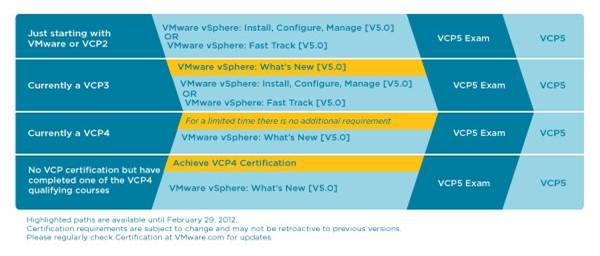
So if student in this situation passes their VCP4 exam today, they must pass their VCP5.0 exam by the end of February. If they don’t pass by 29th Feb they are effectively at Option 3 and they have to attend vSphere 5.0 What’s New class
Wednesday, February 15. 2012
IBM Launches the Distributed Virtual Switch 5000V
IBM System Networking Distributed Virtual Switch 5000V is a highly manageable, distributed virtual switch for VMware vSphere 5.0 Enterprise Plus environment. IBM DVS 5000V provides advanced networking features and troubleshooting features, which make it ideal for deployments in large-scale Server Virtualization and Cloud environments. The IBM DVS 5000V appears as a standard network switch, which enables network administrators to configure and manage the distributed virtual switch as a regular physical switch using familiar IBM switch user interfaces.
• Advanced networking features - L2-L4 ACLs, Static and Dynamic port aggregation, PVLAN, QoS, EVB (IEEE 802.1Qbg)


